Are you considering replacing your roof with a metal option? If so, you have come to the right place! In this article, we will discuss all about metal roofing, including the different types available and how to choose the perfect fit for your home. We’ll look at why metal roofing is such an excellent choice for many homeowners and explore its benefits. You’ll also learn how to weigh up the pros and cons of different styles and materials in order to make an informed decision. So let’s get started!
Disclaimer: This article is for informational purposes only and should not be considered professional advice. It is important to consult with a licensed roofing contractor before making any decision about metal roofing for your home. Advance Roofing LLC has been proudly providing the Spokane, WA area with top-notch roofing services for many years and are always happy to answer any of your questions.
What is Metal Roofing Width?
Metal roofing is a popular roofing material used in a wide range of residential and commercial applications. With its superior energy efficiency, aesthetic appeal, and durability, metal roofing is a great investment for any homeowner looking to replace their existing roof. One important aspect to consider when choosing metal roofing is the width of the panels. In this article, we will explore what metal roofing width is and how to find the perfect fit for your home.
Benefits of Installing a Metal Roof
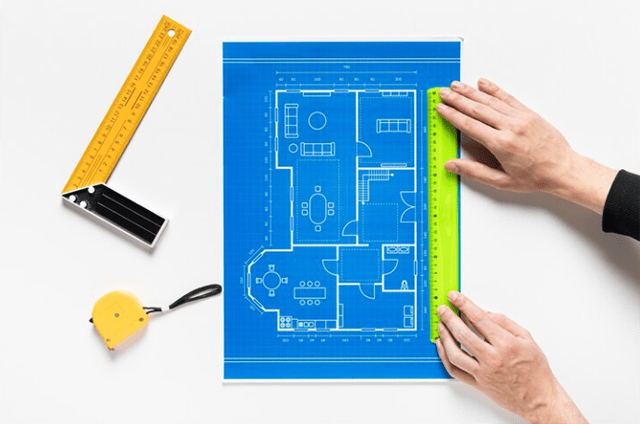
A metal roof can be a great option for a commercial building, offering many benefits that traditional roofing materials cannot match. Metal roofing is a long-lasting, energy efficient, and low-maintenance roofing option that provides exceptional fire and weather resistance while offering design flexibility with various colors and styles.
One of the main benefits of metal roofing is its longevity. Metal roofs are known to last much longer than traditional roofing materials like asphalt shingles. They require little maintenance and can withstand the elements with ease, making them a practical choice for any commercial building.
Another benefit of metal roofing is its energy efficiency. Metal roofs reflect heat and sunlight, reducing the need for air conditioning during the summer months. In addition, many metal roofing materials are designed to be highly insulating, trapping heat inside during the winter months and reducing energy costs.
Metal roofing is also resistant to fire and weather damage. Unlike many traditional roofing materials, metal can withstand extreme temperatures, high winds, and heavy rainfall. This makes it a great option for commercial buildings in areas prone to wildfires, hurricanes, or other natural disasters.
Design flexibility is another advantage of metal roofing. With a wide range of colors and styles available, building owners can choose a metal roof that complements the aesthetic of their commercial building. Whether it’s a modern design or a more traditional style, there is a metal roofing option that can fit any look.
However, there are some potential disadvantages to be aware of when considering installing a metal roof. One is the higher initial cost. Metal roofing can be more expensive than traditional roofing materials, but it is also more durable and longer-lasting, making it a good investment in the long run.
Another potential issue is noise level. During heavy rain, metal roofs can be noisy. However, proper insulation and roof sheathing can reduce this issue, making it a non issue.
Color matching and fastener longevity are also something to consider. When installing a metal roof, it’s important to make sure the color matches the building’s exterior. Fastener longevity is also paramount as improper installation can lead to loose, falling roof parts.
Overall, a metal roof can be a great option for any commercial building. Its benefits far outweigh the potential drawbacks, making it a smart choice for building owners looking for a durable, energy-efficient, and low-maintenance roofing option.
Types of Metal Roofing Widths
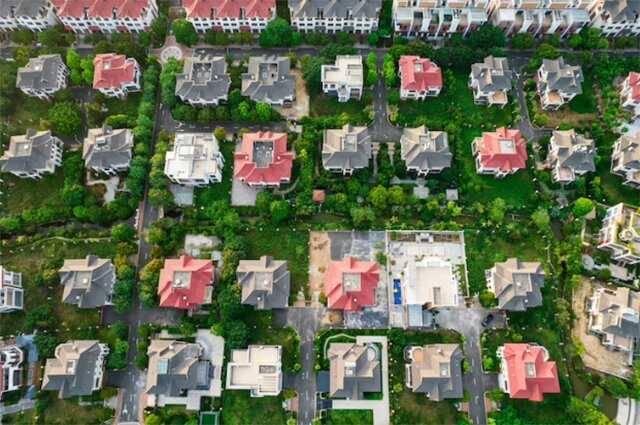
Metal roofing is a durable and practical choice for any building, whether it’s commercial or residential. However, when it comes to selecting the right metal roofing, the width of the panels is an important factor to consider. Choosing the right width can affect the aesthetics of the building, its energy efficiency, and even its structural integrity. In this article, we’ll explore the different types of metal roofing widths available and help you find the perfect fit for your home or business.
Standing Seam Metal Roofing
If you’re in the market for a new roof, you might be wondering which type of roofing material is the right fit for your home. One option that’s been gaining popularity in recent years is standing seam metal roofing. Not only is it a durable choice, but it also offers a range of benefits that homeowners are looking for.
Durability is a top concern for many homeowners, and standing seam metal roofing is up to the challenge. Made with high-quality materials, it’s designed to last for decades without the need for frequent repairs or replacements. This makes it a solid investment for homeowners looking for longevity.
Energy efficiency is another major factor to consider when choosing a roofing material, and standing seam metal roofing doesn’t disappoint. Its reflective surface helps to reflect heat, which can help lower your energy bills and reduce your carbon footprint. Additionally, it’s highly resistant to high wind speeds that can cause damage to traditional roofing materials like asphalt shingles.
Customization is important when it comes to choosing the right roofing material. With standing seam metal roofing, there are plenty of options to choose from. Homeowners can select from a range of metal types, including galvanized steel and zinc alloy, to find the perfect fit for their home. Plus, there are many color options available, allowing homeowners to pick a shade that matches their style and enhances their home’s curb appeal.
One of the most unique features of standing seam metal roofing is its interlocking panels. These panels snap into place with raised seams, creating a sleek and modern look that’s visually impressive. Plus, this design offers minimal maintenance needs as there are no exposed fasteners, decreasing the likelihood of leaks or other damage.
In conclusion, standing seam metal roofing offers a wide range of benefits to homeowners who are looking for a long-lasting, energy-efficient, and customizable roofing option. With interlocking panels and various metal types and color options available, it’s easy to find the perfect fit for your home’s needs.
Corrugated Steel Panels
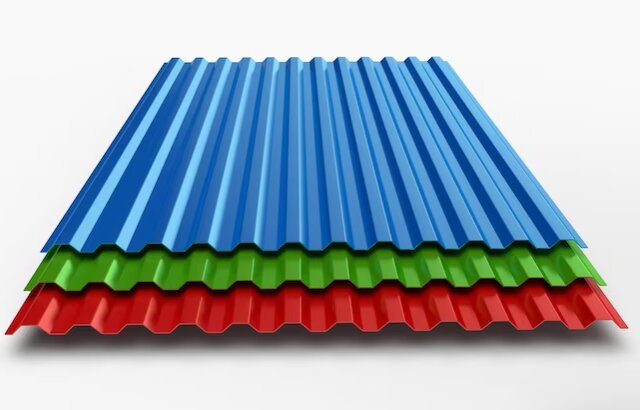
If you’re looking for a roofing material that offers a rugged and traditional look, corrugated steel panels may be just what you need. These panels have been a popular choice for metal roofing for decades, and for good reason.
One of the most notable advantages of corrugated steel panels is their cost effectiveness. Compared to other types of metal roofing, they are more affordable yet still offer top-notch durability and performance.
In addition to their affordability, corrugated steel panels come in a variety of colors and textures, making it easy to find an option that complements your home’s style. Plus, these panels can be custom fabricated according to your project’s specifications, ensuring the perfect fit and finish.
It’s important to note that corrugated steel panels are installed using exposed fasteners, so proper sealant and flashing are needed to prevent leaks from occurring. However, with the right installation and maintenance, corrugated steel panels can provide excellent protection and performance for your home or building.
Overall, corrugated steel panels are a reliable and cost-effective option for those seeking a traditional yet durable metal roofing solution. Don’t hesitate to consider them for your next roofing project.
Stone-Coated Steel Shingles and Tiles
Stone-Coated Steel shingles and tiles are fast becoming a popular option among homeowners for their durability, classic aesthetic appeal, and impressive energy efficiency. At first glance, these roofing materials closely resemble traditional roofing materials like clay and slate tiles. However, they are significantly lighter and provide superior performance to their non-metal counterparts.
One distinct advantage of Stone-Coated Steel shingles and tiles is that they come in a wide range of colors and styles, giving you the freedom to choose a design that complements the architecture of your home. You can opt for a smooth surface, textured finish, or even get the illusion of wood shakes without the negative attributes of wood shingle roofs.
The primary material used to make Stone-Coated Steel shingles and tiles is a zinc aluminum alloy coated with an acrylic resin layer, making them highly resistant to extreme weather conditions like hail, snow, and even hurricane-force winds. They are also incredibly durable, with a paint warranty that is usually valid for up to 50 years or more.
In terms of energy efficiency, Stone-Coated Steel shingles and tiles are among the best in the market. They reflect solar radiation and reduce heat transfer, which means your home stays cooler in the summer and warmer in the winter, lowering your electricity bills. Additionally, you can even add solar panels to your roof for even higher efficiency and lower costs.
If you are considering a Stone-Coated Steel roofing system for your home, it is important to work with a professional roofing contractor that has experience with these materials. They can help you choose the right system, explain the benefits and costs, and ensure that installation adheres to building codes and manufacturer requirements.
In conclusion, Stone-Coated Steel shingles and tiles offer a variety of benefits to homeowners beyond aesthetic appeal and durability. They are energy-efficient, long lasting, and offer a more sustainable and environmentally-friendly option compared to traditional roofing materials. So if you’re looking for a roofing material that checks all the boxes, consider Stone-Coated Steel for your next project.
Copper Roofing Systems
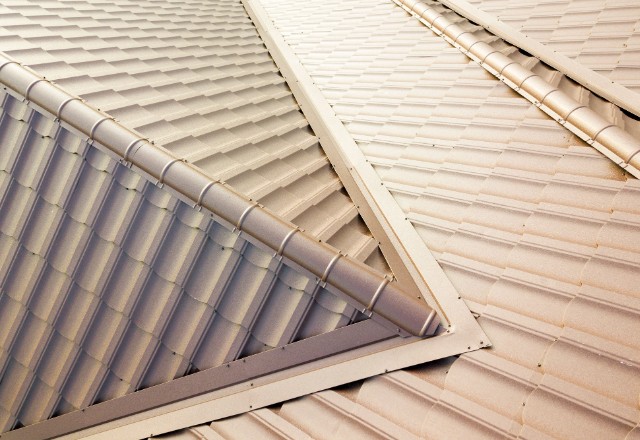
If you’re looking for a roofing solution that offers durability, a unique aesthetic, and longevity, a copper roofing system may be the perfect fit for you. Copper roofs have a long-standing reputation for being a high-quality, luxurious roofing option that is especially suited for traditional or historical buildings, as well as steep-sloped roofs.
One of the standout features of copper roofing is the 100% copper panels that are used. These panels are known to last for decades, ensuring a long-lasting investment for your home or business. Additionally, their unique aesthetic appeal is a major selling point, as they add a distinct, upscale look to any property.
Typically, copper panels for roofing systems come in a width of 12-16 inches but can be custom fabricated to accommodate individual building needs. Another noteworthy feature is the range of material thickness options, ranging from 16-24 gauge, allowing you to choose the right thickness for your project.
Copper roofing is ideal for both residential and commercial buildings, providing an exceptional level of durability that can withstand harsh weather conditions and last for decades. An added benefit is that over time, a copper roof will achieve a greenish-blue patina that many find highly appealing.
In short, if you’re searching for a roofing system that offers durability, longevity, and a unique aesthetic appeal, then copper roofing is an excellent option to explore. Its versatility and custom fabrication options make it an ideal candidate for both new construction and renovation projects.
Galvanized Steel Panels
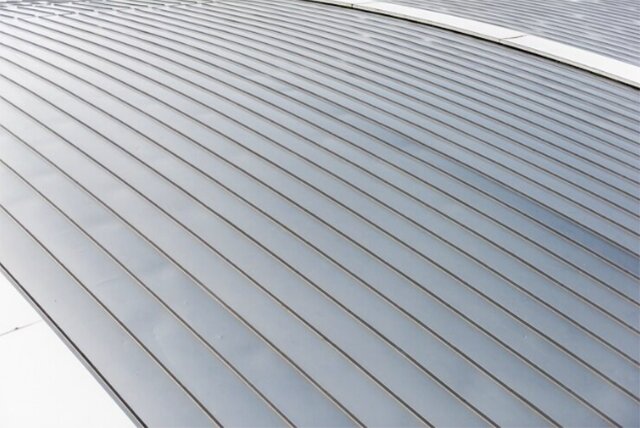
If you’re in search of a cost-effective and durable option for metal roofing, Galvanized Steel Panels may be the solution you need. These panels are created through a process called hot-dip galvanizing, where steel sheets are coated with a layer of zinc to protect against corrosion and rust. This process also gives the panels their distinctive silvery-grey color.
Compared to other metal roofing materials, Galvanized Steel Panels are more affordable, making them a popular choice for residential and commercial buildings. They are also relatively easy to install, which can save on labor costs. However, they do have a few downsides. They are not as energy-efficient as other metal materials, and they can be noisy during heavy rain or hail. Additionally, their lifespan is shorter than other metal roofing materials and they may require more frequent maintenance.
Despite their disadvantages, Galvanized Steel Panels can still be a reliable choice for roofing systems. They are best suited for buildings that require a more economical and low-maintenance option, such as agricultural or industrial buildings. They are also a good choice for temporary roofing solutions.
Overall, Galvanized Steel Panels offer a cost-effective and durable option for roofing systems. Before making a decision, it’s important to weigh the advantages and disadvantages of this material and consider what type of roofing system is best suited for your specific building needs.
Factors to Consider When Choosing the Right Metal Roof Width for Your Home
Choosing the right metal roofing width for your home can have a significant impact on the overall appearance and functionality of your roof. There are various factors to consider when selecting the best width for your home, such as the type of metal roofing, building codes, and your personal preferences. In this article, we will explore these factors in depth and provide guidance on how to find the perfect fit for your home.
Square Footage of Your Home’s Entire Roof Area
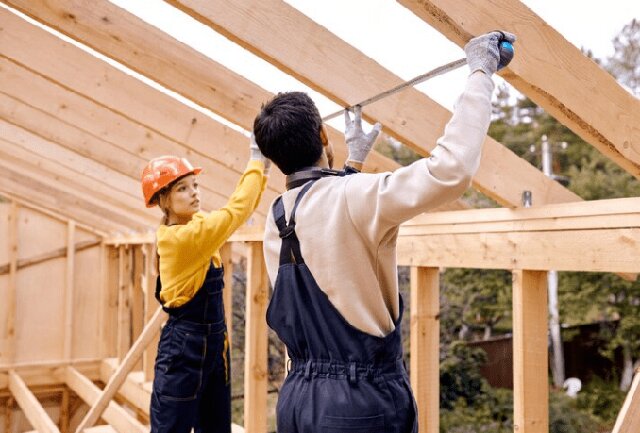
Metal roofing is a popular choice among homeowners due to its durability, energy efficiency, and aesthetic appeal. It is important to calculate the total roof area before choosing metal roofing panels for your home. This will ensure that you purchase enough material to cover your roof without running short or wasting excess product.
To calculate the square footage of your roof, you’ll need to start by measuring the rake of your roof. This is the distance from the highest point of the roof to the outer edge of the eaves. You can use a ladder to access the roof and a measuring tape to get an accurate measurement.
Once you’ve determined the rake, you’ll need to measure the width of the roof. This includes the eaves on each side of the roof. The width of your roof can vary depending on the design of your house, so be sure to measure each section carefully.
To calculate the square footage of one side of your roof, multiply the rake measurement by the width measurement. For example, if your rake is 20 feet and your roof width is 50 feet, the area of one side of your roof would be 1,000 square feet (20 x 50 = 1,000).
To calculate the total area of your roof, multiply the obtained result by two. This accounts for both sides of your roof. So, using the same example, the total square footage of your roof would be 2,000 square feet (1,000 x 2 = 2,000).
It’s important to note that when purchasing metal roofing panels, you should account for extra material. It’s recommended to purchase between 10-15% more material than you think you’ll need to account for any mistakes, odd cuts, or unforeseen factors. This will ensure that you have enough product to complete your roof without having to make additional trips to the store or waste excess material.
In summary, calculating the square footage of your home’s entire roof area is an essential step in selecting the right metal roofing panels for your home. By measuring the rake and width of your roof, and accounting for extra material, you’ll be able to purchase the right amount of metal roofing to cover your entire roof without any hassle.
Type of Metal Roof You Are Installing
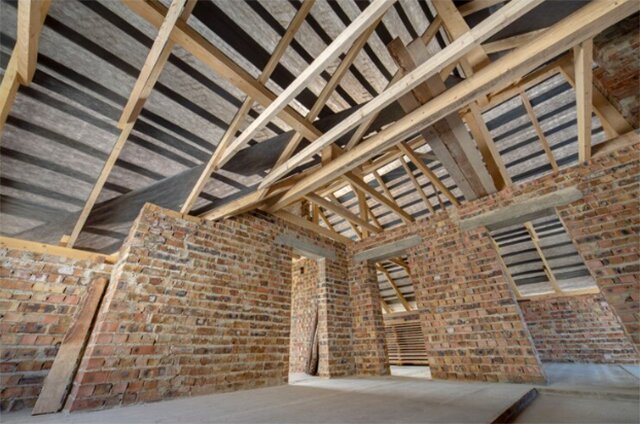
When choosing the type of metal roof to install on your home, there are several factors to consider. The most widely used metals for roofing are tin, zinc, steel, aluminum, and copper. Each metal has its own unique cost considerations and benefits, so it’s important to do some research before making a decision.
One design style of metal roofing is through-fastened panels. These panels are attached to the roofing deck by screws that go through the panel and into the deck. They are a cost-effective option, but they can be prone to leaking over time.
Modular panels, on the other hand, are manufactured with interlocking panels that snap together. This design style can mimic other types of roofing materials, such as wood shakes or clay tiles, and comes in a wide range of colors and styles. However, because of their interlocking design, modular panels require careful installation to ensure a weather tight seal.
Standing-seam panels are another popular metal roofing option. These panels are installed by attaching one panel to another with a raised seam, creating a vertical profile. While they can be more expensive than through-fastened panels, they provide a sleek and modern look. We highly recommend that standing-seam panels be installed by professional roofing installers, as the installation process can be complex.
In terms of cost considerations, through-fastened panels are usually the least expensive option, followed by modular panels. Standing-seam panels are typically the most expensive, but their durability and aesthetic appeal make them a worthwhile investment.
Ultimately, the type of metal roof you choose to install will depend on your unique needs and budget. Consider the advantages and disadvantages of each design style and consult with a roofing contractor to ensure you make the best decision for your home.
Aesthetic Appeal You Want to Achieve
When it comes to choosing the right metal roofing width, many homeowners are primarily concerned with functionality. While durability and energy efficiency are important factors to consider, it’s also essential to remember that a metal roof can add significant aesthetic value to your home. The right panel profile can complement the style and architecture of your house, creating a cohesive and attractive look that can increase your home’s curb appeal and overall value.
To achieve your desired aesthetic appeal, it’s essential to consider the style of architecture of your home. For example, if your house has a modern or contemporary design, a standing seam metal roofing panel may be the perfect fit. This panel profile features raised seams that run vertically, adding a sleek and stylish element that can enhance the modern architecture of your home.
In contrast, if your home has a more rustic or traditional style, a corrugated steel panel or a stone-coated steel shingle could be the optimal choice. Corrugated steel panels have a wave-like pattern that can complement the natural surroundings of your property, while stone-coated steel shingles can mimic the look of classic roofing materials like clay tiles or wood shakes.
Copper roofing systems are an excellent option for those seeking a refined and timeless aesthetic appeal. This roofing material results in an attractive patina over time, adding a distinctive look that can elevate the look of your home.
Galvanized steel panels are versatile and can suit many styles of architecture. They come in a wide range of colors and styles, and their durability makes them a great long-term investment for any homeowner.
In conclusion, finding the right metal roofing width to achieve your desired aesthetic appeal requires careful consideration of both form and function. By selecting the right panel profile that harmonizes with the architecture of your home, you can create a beautiful and cohesive look that will enhance the value and appeal of your property for years to come. Remember to consider these top 5 most relevant keywords when selecting your metal roofing width: standing seam metal roofing, corrugated steel panels, stone-coated steel shingles, copper roofing systems, and galvanized steel panels.
Cost and Energy Efficiency Options Available

When considering a new metal roof for your home, it’s essential to examine the cost and energy efficiency options available to you. While the initial cost of a metal roof may be more expensive than traditional asphalt shingles, metal roofs provide long-term benefits, including energy savings and increased durability.
One important factor to consider when selecting a metal roof is the color of the material. Dark colors absorb more heat than light colors, which can be a significant concern in warm climates. Lighter colored metal roofs reflect more sunlight, reducing the amount of heat that is absorbed and keeping your home cooler. This can lead to a significant reduction in cooling costs during the summer months.
It’s also crucial to choose an energy efficient metal roof. According to the U.S. Department of Energy, an energy efficient roof can reduce cooling costs by 7% to 15%. One option for an energy efficient metal roof is a cool metal roof. These roofs have reflective coatings that reflect the sun’s rays, reducing the amount of heat absorbed by the roof. Cool metal roofs are ENERGY STAR® certified and eligible for tax incentives, making them an excellent choice for environmentally conscious homeowners.
Other energy efficient metal roofing options include panels with insulation built-in and standing seam metal roofs, which provide superior energy efficiency and protection against the elements.
When selecting a metal roofing option, it’s essential to consider both the upfront cost and long-term savings associated with energy efficiency. With so many options available in a wide range of colors, there is a metal roofing solution that can fit any budget and style preference while still providing significant energy savings for your home.
Conclusion
In conclusion, choosing the right width for your metal roof is an important decision that can impact your home’s aesthetic appeal, energy efficiency and overall protection against the elements.
We’ve discussed various types of metal roofing widths, from seam panels to corrugated metal roofing and standing seam metal roofs that offer superior energy efficiency. To make the right choice for your home, it’s important to consider factors such as your location, building codes and environmental concerns.
Consulting with a roofing contractor or manufacturer can also be a great way to gain insight into the various metal roofing widths and types of metal used in the industry. This will allow you to make a decision that takes into account not only your personal preferences but also the practical considerations that are essential for ensuring your metal roof is a long-lasting and durable investment.
At the end of the day, the right metal roof width will provide your home with both style and substance, giving you peace of mind and protection for many years to come.



 509-201-4190
509-201-4190
